 |
|---|
This is a list of prime ministers of Finland since the establishment of that office in 1917.
 |
|---|
This is a list of prime ministers of Finland since the establishment of that office in 1917.
In 1918, the Finnish Senate was transformed into the Finnish Government, and the position of vice-chairman of the economic division of the Senate was transformed into the position of prime minister. Kesäranta (in Swedish Villa Bjälbo), located in the Meilahti neighborhood of Helsinki, has been the official residence of the prime minister of Finland since 1919.
Since its independence (declared on 6 December 1917), Finland has had 75 cabinets, [1] including the current one, the longest lasting being the cabinet of Prime Minister Juha Sipilä, lasting 1,469 days. [2]
Before the 1980s, cabinets tended to be short lived; the president was the most important political figure, and he had the right to form a new cabinet whenever he wanted. From the 1980s onwards, cabinets have tended to serve full terms (although the prime minister changed midterm in a few cases, most of the other cabinet members have remained nearly unchanged) and the prime minister has become more powerful a figure than the president. Under the current constitution, the prime minister is chosen by the parliament and only formally appointed by the president.
Finnish cabinets and prime ministers are numbered sequentially. A prime minister can serve as the head of multiple cabinets. For example, Matti Vanhanen is both the 39th and the 40th prime minister. [3]
| No. | Portrait | Name (Birth–Death) | Term of office | Election | Party | Cabinet Coalition | President (Tenure) | |||
|---|---|---|---|---|---|---|---|---|---|---|
| Took office | Left office | Duration | ||||||||
| 1 |  | Pehr Evind Svinhufvud (1861–1944) | 27 November 1917 | 27 May 1918 | 182 days | 1917 | Young Finnish | 1. Svinhufvud I SP–NSP–ML–RKP (minority) | None | |
| 2 |  | Juho Kusti Paasikivi (1870–1956) | 27 May 1918 | 27 November 1918 | 185 days | — | Finnish | 2. Paasikivi I SP–NSP–ML–RKP (minority) | Regent Pehr Evind Svinhufvud (1918) | |
| 3 |  | Lauri Ingman (1868–1934) | 27 November 1918 | 17 April 1919 | 142 days | — | National Coalition | 3. Ingman I KOK–ED–RKP | ||
| Regent Carl Gustaf Emil Mannerheim (1918–1919) | ||||||||||
| 4 |  | Kaarlo Castrén (1860–1938) | 17 April 1919 | 15 August 1919 | 121 days | 1919 | National Progressive | 4. K. Castrén ML–ED–RKP (minority) | ||
| Kaarlo Juho Ståhlberg (1919–1925) | ||||||||||
| 5 |  | Juho Vennola (1872–1938) | 15 August 1919 | 15 March 1920 | 214 days | — | National Progressive | 5. Vennola I ML–ED (minority) | ||
| 6 |  | Rafael Erich (1879–1946) | 15 March 1920 | 9 April 1921 | 1 year, 26 days | — | National Coalition | 6. Erich KOK–ML–ED–RKP | ||
| (5) |  | Juho Vennola (1872–1938) | 9 April 1921 | 2 June 1922 | 1 year, 55 days | — | National Progressive | 7. Vennola II ML–ED (minority) | ||
| 7 | 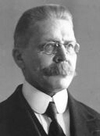 | Aimo Cajander (1879–1943) | 2 June 1922 | 14 November 1922 | 166 days | 1922 | Independent | 8. Cajander I (caretaker) | ||
| 8 |  | Kyösti Kallio (1873–1940) | 14 November 1922 | 18 January 1924 | 1 year, 66 days | — | Agrarian | 9. Kallio I ML–ED (minority) | ||
| (7) |  | Aimo Cajander (1879–1943) | 18 January 1924 | 31 May 1924 | 135 days | — | Independent | 10. Cajander II (caretaker) | ||
| (3) |  | Lauri Ingman (1868–1934) | 31 May 1924 | 31 March 1925 | 305 days | 1924 | National Coalition | 11. Ingman II KOK–ML–ED–RKP | ||
| Lauri Kristian Relander (1925–1931) | ||||||||||
| 9 |  | Antti Tulenheimo (1879–1952) | 31 March 1925 | 31 December 1925 | 276 days | — | National Coalition | 12. Tulenheimo KOK–ML (minority) | ||
| (8) |  | Kyösti Kallio (1873–1940) | 31 December 1925 | 13 December 1926 | 348 days | — | Agrarian | 13. Kallio II ML–KOK (minority) | ||
| 10 |  | Väinö Tanner (1881–1966) | 13 December 1926 | 17 December 1927 | 1 year, 5 days | — | Social Democratic | 14. Tanner SDP (minority) | ||
| 11 | 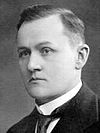 | Juho Sunila (1875–1936) | 17 December 1927 | 22 December 1928 | 1 year, 6 days | 1927 | Agrarian | 15. Sunila I ML (minority) | ||
| 12 | 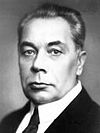 | Oskari Mantere (1874–1942) | 22 December 1928 | 16 August 1929 | 238 days | — | National Progressive | 16. Mantere ED (minority) | ||
| (8) |  | Kyösti Kallio (1873–1940) | 16 August 1929 | 4 July 1930 | 323 days | 1929 | Agrarian | 17. Kallio III ML (minority) | ||
| (1) |  | Pehr Evind Svinhufvud (1861–1944) | 4 July 1930 | 18 February 1931 | 230 days | — | National Coalition | 18. Svinhufvud II ML–KOK–ED–RKP | ||
| 1930 | ||||||||||
| — |  | Juho Vennola (1872–1938) Interim Prime Minister | 18 February 1931 | 21 March 1931 | 32 days | — | National Progressive | Pehr Evind Svinhufvud (1931–1937) | ||
| (11) |  | Juho Sunila (1875–1936) | 21 March 1931 | 14 December 1932 | 1 year, 269 days | — | Agrarian | 19. Sunila II ML–KOK–ED–RKP | ||
| 13 |  | Toivo Mikael Kivimäki (1886–1968) | 14 December 1932 | 7 October 1936 | 3 years, 298 days | — | National Progressive | 20. Kivimäki ML–ED–RKP (minority) | ||
| 1933 | ||||||||||
| (8) |  | Kyösti Kallio (1873–1940) | 7 October 1936 | 17 February 1937 | 134 days | 1936 | Agrarian | 21. Kallio IV ML–ED (minority) | ||
| — |  | Rudolf Holsti (1881–1945) Interim Prime Minister | 17 February 1937 | 12 March 1937 | 24 days | — | National Progressive | Kyösti Kallio (1937–1940) | ||
| (7) |  | Aimo Cajander (1879–1943) | 12 March 1937 | 1 December 1939 | 2 years, 265 days | — | National Progressive | 22. Cajander III SDP–ML–ED–RKP | ||
| 1939 | ||||||||||
| 14 |  | Risto Ryti (1889–1956) | 1 December 1939 | 19 December 1940 | 1 year, 19 days | — | National Progressive | 23. Ryti I SDP–ML–ED–RKP | ||
| — | 24. Ryti I SDP–ML–KOK–ED–RKP | |||||||||
| — | 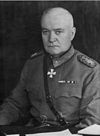 | Rudolf Walden (1878–1946) Interim Prime Minister | 19 December 1940 | 4 January 1941 | 17 days | — | Independent | Risto Ryti (1940–1944) | ||
| 15 | 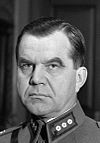 | Johan Wilhelm Rangell (1894–1982) | 4 January 1941 | 5 March 1943 | 2 years, 61 days | — | National Progressive | 25. Rangell SDP–ML–KOK–RKP–ED–IKL | ||
| 16 | 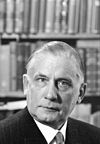 | Edwin Linkomies (1894–1963) | 5 March 1943 | 8 August 1944 | 1 year, 157 days | — | National Coalition | 26. Linkomies KOK–SDP–ML–RKP–ED | ||
| Carl Gustaf Emil Mannerheim (1944–1946) | ||||||||||
| 17 |  | Antti Hackzell (1881–1946) | 8 August 1944 | 21 September 1944 | 45 days | — | Independent | 27. Hackzell KOK–SDP–ML–RKP–ED | ||
| 18 | 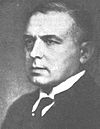 | Urho Castrén (1886–1965) | 21 September 1944 | 17 November 1944 | 58 days | — | National Coalition | 28. U. Castrén KOK–SDP–ML–RKP–ED | ||
| (2) |  | Juho Kusti Paasikivi (1870–1956) | 17 November 1944 | 9 March 1946 | 1 year, 113 days | — | National Coalition | 29. Paasikivi II SDP–SKDL–ML–KOK–RKP–ED | ||
| 1945 | 30. Paasikivi III SDP–SKDL–ML–ED–RKP | |||||||||
| — |  | Carl Enckell (1876–1959) Interim Prime Minister | 9 March 1946 | 26 March 1946 | 18 days | — | Independent | |||
| Juho Kusti Paasikivi (1946–1956) | ||||||||||
| 19 |  | Mauno Pekkala (1890–1952) | 26 March 1946 | 29 July 1948 | 2 years, 126 days | — | SKDL | 31. Pekkala SKDL–SDP–ML–RKP | ||
| 20 |  | Karl-August Fagerholm (1901–1984) | 29 July 1948 | 17 March 1950 | 1 year, 232 days | 1948 | Social Democratic | 32. Fagerholm I SDP (minority) | ||
| 21 | 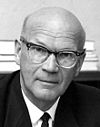 | Urho Kekkonen (1900–1986) | 17 March 1950 | 17 November 1953 | 3 years, 246 days | — | Agrarian | 33. Kekkonen I ML–RKP–ED (minority) | ||
| — | 34. Kekkonen II ML–SDP–RKP–ED | |||||||||
| 1951 | 35. Kekkonen III ML–SDP–RKP | |||||||||
| — | 36. Kekkonen IV ML–RKP (minority) | |||||||||
| 22 |  | Sakari Tuomioja (1911–1964) | 17 November 1953 | 5 May 1954 | 170 days | — | Independent | 37. Tuomioja (caretaker) | ||
| 23 |  | Ralf Törngren (1899–1961) | 5 May 1954 | 20 October 1954 | 169 days | 1954 | Swedish People's | 38. Törngren SDP–ML–RKP | ||
| (21) |  | Urho Kekkonen (1900–1986) | 20 October 1954 | 3 March 1956 | 1 year, 136 days | — | Agrarian | 39. Kekkonen V ML–SDP | ||
| (20) |  | Karl-August Fagerholm (1901–1984) | 3 March 1956 | 27 May 1957 | 1 year, 86 days | — | Social Democratic | 40. Fagerholm II SDP–ML–RKP | Urho Kekkonen (1956–1982) | |
| 24 |  | V. J. Sukselainen (1906–1995) | 27 May 1957 | 29 November 1957 | 187 days | — | Agrarian | 41. Sukselainen I ML–RKP–SDP–KP–TPSL | ||
| 25 | 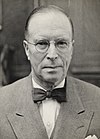 | Rainer von Fieandt (1890–1972) | 29 November 1957 | 26 April 1958 | 149 days | — | Independent | 42. von Fieandt (caretaker) | ||
| 26 | 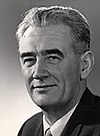 | Reino Kuuskoski (1907–1965) | 26 April 1958 | 29 August 1958 | 126 days | — | Independent | 43. Kuuskoski (caretaker) | ||
| (20) |  | Karl-August Fagerholm (1901–1984) | 29 August 1958 | 13 January 1959 | 138 days | 1958 | Social Democratic | 44. Fagerholm III SDP–ML–KOK–RKP–KP | ||
| (24) |  | V. J. Sukselainen (1906–1995) | 13 January 1959 | 3 July 1961 | 2 years, 183 days | — | Agrarian | 45. Sukselainen II ML–RKP (minority) | ||
| — |  | Eemil Luukka (1892–1970) Interim Prime Minister | 3 July 1961 | 14 July 1961 | 12 days | — | Agrarian | |||
| 27 |  | Martti Miettunen (1907–2002) | 14 July 1961 | 13 April 1962 | 274 days | — | Agrarian | 46. Miettunen I ML (minority) | ||
| 28 |  | Ahti Karjalainen (1923–1990) | 13 April 1962 | 18 December 1963 | 1 year, 250 days | 1962 | Agrarian | 47. Karjalainen I ML–KOK–RKP–KP–SDP | ||
| 29 |  | Reino Ragnar Lehto (1898–1966) | 18 December 1963 | 12 September 1964 | 270 days | — | Independent | 48. Lehto (caretaker) | ||
| 30 | 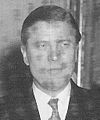 | Johannes Virolainen (1914–2000) | 12 September 1964 | 27 May 1966 | 1 year, 258 days | — | Agrarian | 49. Virolainen ML–KOK–RKP–KP | ||
| 31 |  | Rafael Paasio (1903–1980) | 27 May 1966 | 22 March 1968 | 1 year, 301 days | 1966 | Social Democratic | 50. Paasio I SDP–KESK–SKDL–TPSL | ||
| 32 |  | Mauno Koivisto (1923–2017) | 22 March 1968 | 14 May 1970 | 2 years, 54 days | — | Social Democratic | 51. Koivisto I SDP–KESK–SKDL–TPSL–RKP | ||
| 33 |  | Teuvo Aura (1912–1999) | 14 May 1970 | 15 July 1970 | 63 days | — | Independent | 52. Aura I (caretaker) | ||
| (28) |  | Ahti Karjalainen (1923–1990) | 15 July 1970 | 29 October 1971 | 1 year, 107 days | 1970 | Centre | 53. Karjalainen II KESK–SDP–SKDL–RKP–LKP | ||
| (33) |  | Teuvo Aura (1912–1999) | 29 October 1971 | 23 February 1972 | 118 days | — | Independent | 54. Aura II (caretaker) | ||
| (31) |  | Rafael Paasio (1903–1980) | 23 February 1972 | 4 September 1972 | 195 days | 1972 | Social Democratic | 55. Paasio II SDP (minority) | ||
| 34 |  | Kalevi Sorsa (1930–2004) | 4 September 1972 | 13 June 1975 | 2 years, 283 days | — | Social Democratic | 56. Sorsa I SDP–KESK–RKP–LKP | ||
| 35 |  | Keijo Liinamaa (1929–1980) | 13 June 1975 | 30 November 1975 | 171 days | — | Independent | 57. Liinamaa (caretaker) | ||
| (27) |  | Martti Miettunen (1907–2002) | 30 November 1975 | 15 May 1977 | 1 year, 167 days | 1975 | Centre | 58. Miettunen II KESK–RKP–LKP (minority) | ||
| — | 59. Miettunen III KESK–RKP–LKP | |||||||||
| (34) |  | Kalevi Sorsa (1930–2004) | 15 May 1977 | 26 May 1979 | 2 years, 12 days | — | Social Democratic | 60. Sorsa II SDP–KESK–SKDL–RKP–LKP | ||
| (32) |  | Mauno Koivisto (1923–2017) | 26 May 1979 | 27 October 1981 | 2 years, 155 days | 1979 | Social Democratic | 61. Koivisto II SDP–KESK–SKDL–RKP | ||
| — |  | Eino Uusitalo (1924–2015) Interim Prime Minister | 27 October 1981 | 19 February 1982 | 117 days | — | Centre | Mauno Koivisto (1982–1994) | ||
| (34) |  | Kalevi Sorsa (1930–2004) | 19 February 1982 | 30 April 1987 | 5 years, 71 days | — | Social Democratic | 62. Sorsa III SDP–KESK–SKDL–RKP–LKP | ||
| 1983 | 63. Sorsa IV SDP–KESK–RKP–SMP | |||||||||
| 36 |  | Harri Holkeri (1937–2011) | 30 April 1987 | 26 April 1991 | 3 years, 362 days | 1987 | National Coalition | 64. Holkeri KOK–SDP–RKP–SMP | ||
| 37 |  | Esko Aho (born 1954) | 26 April 1991 | 13 April 1995 | 3 years, 353 days | 1991 | Centre | 65. Aho KESK–KOK–RKP–SKL | ||
| Martti Ahtisaari (1994–2000) | ||||||||||
| 38 |  | Paavo Lipponen (born 1941) | 13 April 1995 | 17 April 2003 | 8 years, 5 days | 1995 | Social Democratic | 66. Lipponen I SDP–KOK–RKP–VAS–VIHR | ||
| 1999 | 67. Lipponen II SDP–KOK–RKP–VAS–VIHR | |||||||||
| Tarja Halonen (2000–2012) | ||||||||||
| 39 |  | Anneli Jäätteenmäki (born 1955) | 17 April 2003 | 24 June 2003 | 69 days | 2003 | Centre | 68. Jäätteenmäki KESK–SDP–RKP | ||
| 40 |  | Matti Vanhanen (born 1955) | 24 June 2003 | 22 June 2010 | 6 years, 364 days | — | Centre | 69. Vanhanen I KESK–SDP–RKP | ||
| 2007 | 70. Vanhanen II KESK–KOK–RKP–VIHR | |||||||||
| 41 |  | Mari Kiviniemi (born 1968) | 22 June 2010 | 22 June 2011 | 1 year, 1 day | — | Centre | 71. Kiviniemi KESK–KOK–RKP–VIHR | ||
| 42 |  | Jyrki Katainen (born 1971) | 22 June 2011 | 24 June 2014 | 3 years, 3 days | 2011 | National Coalition | 72. Katainen KOK–SDP–RKP–VAS–VIHR–KD | ||
| Sauli Niinistö (2012–2024) | ||||||||||
| 43 |  | Alexander Stubb (born 1968) | 24 June 2014 | 29 May 2015 | 340 days | — | National Coalition | 73. Stubb KOK–SDP–RKP–VIHR–KD | ||
| 44 |  | Juha Sipilä (born 1961) | 29 May 2015 | 6 June 2019 | 4 years, 9 days | 2015 | Centre | 74. Sipilä KESK–PS–KOK | ||
| 45 |  | Antti Rinne (born 1962) | 6 June 2019 | 10 December 2019 | 188 days | 2019 | Social Democratic | 75. Rinne SDP–KESK–VIHR–VAS–RKP | ||
| 46 |  | Sanna Marin (born 1985) | 10 December 2019 | 20 June 2023 | 3 years, 193 days | — | Social Democratic | 76. Marin SDP–KESK–VIHR–VAS–RKP | ||
| 47 |  | Petteri Orpo (born 1969) | 20 June 2023 | Incumbent | 1 year, 221 days | 2023 | National Coalition | 77. Orpo KOK–PS–RKP–KD | ||
| Alexander Stubb (since 2024) | ||||||||||


The politics of Finland take place within the framework of a parliamentary representative democracy. Finland is a republic whose head of state is President Alexander Stubb, who leads the nation's foreign policy and is the supreme commander of the Finnish Defence Forces. Finland's head of government is Prime Minister Petteri Orpo, who leads the nation's executive branch, called the Finnish Government. Legislative power is vested in the Parliament of Finland, and the Government has limited rights to amend or extend legislation. The Constitution of Finland vests power to both the President and Government: the President has veto power over parliamentary decisions, although this power can be overruled by a majority vote in the Parliament.
In the executive branch, the head of government is the highest or the second-highest official of a sovereign state, a federated state, or a self-governing colony, autonomous region, or other government who often presides over a cabinet, a group of ministers or secretaries who lead executive departments.
A presidency is an administration or the executive, the collective administrative and governmental entity that exists around an office of president of a state or nation. Although often the executive branch of government, and often personified by a single elected person who holds the office of "president", in practice, the presidency includes a much larger collective of people, such as chiefs of staff, advisers and other bureaucrats. Although often led by a single person, presidencies can also be of a collective nature, such as the presidency of the European Union is held on a rotating basis by the various national governments of the member states. Alternatively, the term presidency can also be applied to the governing authority of some churches, and may even refer to the holder of a non-governmental office of president in a corporation, business, charity, university, etc. or the institutional arrangement around them. For example, "the presidency of the Red Cross refused to support his idea." Rules and support to discourage vicarious liability leading to unnecessary pressure and the early termination of term have not been clarified. These may not be as yet supported by state let initiatives. Contributory liability and fraud may be the two most common ways to become removed from term of office and/or to prevent re-election.

The prime minister of Belgium or the premier of Belgium is the head of the federal government of Belgium, and the most powerful person in Belgian politics.

The Parliament of Finland is the unicameral and supreme legislature of Finland, founded on 9 May 1906. In accordance with the Constitution of Finland, sovereignty belongs to the people, and that power is vested in the Parliament. The Parliament consists of 200 members, 199 of whom are elected every four years from 13 multi-member districts electing 6 to 37 members using the proportional D'Hondt method. In addition, there is one member from Åland.
The Swedish People's Party of Finland is a Finnish political party founded in 1906. Its primary aim is to represent the interests of the minority Swedish-speaking population of Finland. The party is currently a participant in the Government of Petteri Orpo, holding the posts of Minister of Education, Minister for European Affairs, and Minister of Youth, Sport and Physical Activity.

The prime minister of Finland is the leader of the Finnish Government. The prime minister and their cabinet exercise executive authority in the state. The prime minister is formally ranked third in the protocol after the president of Finland and the speaker of the Parliament but is in practice the most powerful officeholder. Finland's first prime minister, Pehr Evind Svinhufvud, was appointed on 27 November 1917, just a few days before the country declared its independence.
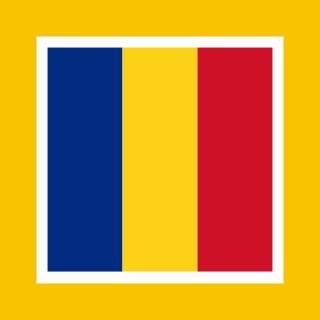
The prime minister of Romania, officially the prime minister of the Government of Romania, is the head of the Government of Romania. Initially, the office was styled President of the Council of Ministers, when the term "Government" included more than the Cabinet, and the Cabinet was called the Council of Ministers. The title was officially changed to Prime Minister by the 1965 Constitution of Romania during the communist regime.
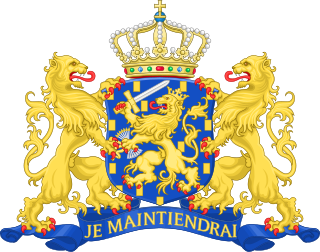
The prime minister of the Netherlands is the head of the executive branch of the Government of the Netherlands. Although the monarch is the de jure head of government, the prime minister de facto occupies this role as the officeholder chairs the Council of Ministers and coordinates its policy with the rest of the cabinet. In his role as the de facto head of government, the prime minister also represents the Netherlands in the European Council. Forty-three incumbents have served in the position. The current prime minister, Dick Schoof, has been in the position since 2 July 2024, with his cabinet being sworn in on the same day.

The Prime Minister of the Russian Federation, also domestically stylized as the Chairman of the Government of the Russian Federation and widely recognized as the prime minister, is the head of government of Russia and the second highest ranking political office in Russia. Although the post dates back to 1905, its current form was established on 12 December 1993 following the introduction of a new constitution.
Primus inter pares is a Latin phrase meaning first among equals. It is typically used as an honorary title for someone who is formally equal to other members of their group but is accorded unofficial respect, traditionally owing to their seniority in office.
A cabinet secretary is usually a senior official who provides services and advice to a cabinet of ministers as part of the Cabinet Office. In many countries, the position can have considerably wider functions and powers, including general responsibility for the entire civil service.

The Finnish Government is the executive branch and cabinet of Finland, which directs the politics of Finland and is the main source of legislation proposed to the Parliament. The Government has collective ministerial responsibility and represents Finland in the Council of the European Union. In the incumbent Orpo Cabinet, the Government comprises 19 ministers leading 12 ministries.

The prime minister of Ethiopia is the head of government and chief executive of Ethiopia. Ethiopia is a parliamentary republic with a prime minister as head of the government and the commander-in-chief of the Ethiopian Armed Forces. The prime minister is the most powerful political figure in Ethiopian politics. The official residence of the prime minister is the Menelik Palace in Addis Ababa. The prime minister is elected from the members of the House of Peoples' Representatives and presents a government platform. The prime minister must receive a vote of confidence in the House of Peoples' Representatives to exercise executive power as chief executive. Abiy Ahmed is the third prime minister of the Federal Democratic Republic of Ethiopia, serving since April 2018.

The prime minister of Cambodia is the head of government of Cambodia. The prime minister is also the chairman of the Cabinet and leads the executive branch of the Royal Government of Cambodia. The prime minister is a member of parliament, and is appointed by the monarch for a term of five years. Since 1945, 37 individuals have served as prime minister; 33 as official prime ministers, and 4 in acting capacities. The current prime minister since 2023 is Hun Manet.
In many countries, women have been underrepresented in the government and different institutions. As of 2019, women were still underrepresented, but were increasingly being elected to be heads of state and government.
The title secretary of state or state's secretary is commonly used for senior or mid-level posts in governments around the world. The role varies between countries, and in some cases there are multiple secretaries of state in the country's system of governing the country.

The Chancellery of the Prime Minister of Poland, or KPRM, is the executive office for the Prime Minister of Poland. Created under the administrative reorganization reforms by the government of Włodzimierz Cimoszewicz in 1996 and implemented in the following year, the Chancellery assumed many responsibilities of the previous Office of the Council of Ministers. In addition to serving as the premier's office, the Chancellery oversees the technical, legislative, legal and organizational support for the Prime Minister, Deputy Prime Minister and the Council of Ministers. The current Chief of the Chancellery is Jan Grabiec.
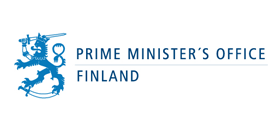
The Prime Minister's Office is the foremost governing body of the Finnish Government and one of the twelve ministries of Finland. Tracing its roots to the 1809-established Office Administrative Department of the Grand Duchy of Finland, it is currently headed by the Prime Minister of Finland and a State Secretary and located in the Government Palace in the Kruununhaka neighbourhood of Helsinki. Its main functions are to support the Prime Minister and the Finnish Government and to oversee the enactment of government programmes.
This article deals with the political history of Finland from prehistoric times, through the Swedish rule (c.1200-1808), to the Russian rule and the time of independent Finland (1917-). In this context, Finland broadly refers to the geographical area in which the current Finnish state is located.